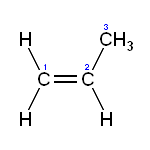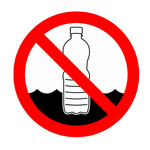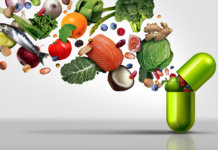Bottled water is more expensive under the pretense that it is safer and of higher quality than tap water, right? Well, scientists disagree. It turns out that bottled water is one of those products for which you pay more but in return get less. The question, of course, is why? The answer is surprisingly simple. There are micro-plastic particles in Bottled water.
Plastic, a man-made pollutant, is present everywhere around us. It is in the air, soil, water, food, and inside our bodies. For some reason, however, there is much more plastic in bottled water than in groundwater and tap water.
We are drinking plastic every day. This we know for sure. What we do not know is how does this plastic affect our health and if it does, what are the actual repercussions of it.
This article brings you all the facts about bottled water contamination with micro-plastic and its potential health effects.
Why is there plastic in the water?
Plastic is produced and used on a large scale, worldwide. Most of it is not recycled. It ends up on landfills where it is burned, or it just stays in the environment. Plastic is not a naturally occurring product of nature. We have added it to the landscape of human needs and in less than a hundred years we’ve managed to get it everywhere.

Micro-plastic particles vary in their size.Some can be easily observed, while others are so small that they can be transferred from the blood of a pregnant woman into her unborn child. These are alarming facts.
This explains why there is plastic in the water, but why is bottled water the worse?
It is packed in plastic bottles. That’s why. The same plastic bottles that are the number one cause of plastic pollution. Companies that produce bottled water try to deny this, but the connection is clear. There is twice as much plastic in bottled water samples than in tap water. Furthermore, this is the same type of plastic used to produce bottles and bottle caps. Micro-plastic in bottled water is the worse.
Health Effects of Micro-plastic

Many researchers believe that exposure to plastic correlates perfectly with the rise of chronic diseases, obesity, cancer, infertility, and neurological disorders. Still, we are missing the direct connection.
Others dismiss this claim. They say that the unproven health hazards of bottled water are not enough to outweigh its benefits. Especially in the areas where clean water is not available, where there is a real threat of exposure to dangerous viruses and bacteria.
World Health Organization (WHO) analyzed the effects of micro-plastics on human health. They investigated three potential health hazards:
- Chemicals found in plastic
- Physical particles of micro-plastic
- Presence of microorganisms
According to their findings, chemicals and microorganisms are not a cause for concern. The potential toxic effects of tiny, nano-sized, particles of micro-plastic should not, however, be dismissed.
More research is needed
For now, the WHO does not consider micro-plastic to be harmless, or a proven hazard.
All experts agree that we need to significantly reduce the use of plastic. The increasingly visible negative effects on the environment cannot be ignored. It is estimated that more than 12 million metric tons of plastic waste are dumped into the world’s oceans every year. The sad pictures of wild animals choking on plastic illustrate the severity of the problem.
The Bottom Line





